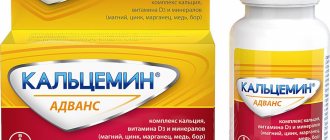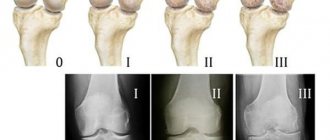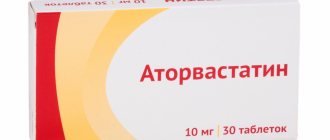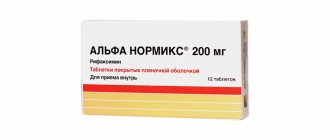Medicine is constantly improving, changes are taking place in the forms and methods of treatment for various diseases. Some medications are modified, while others are completely withdrawn from general use due to their ineffectiveness or the presence of a large number of adverse reactions, which can become a source of danger to humans. Pyramidon is one of the discontinued drugs. We will look at what this is in this article. Not everyone knows that this remedy actually existed. Many people remember about him only from the books of M. Bulgakov.
Release form
What it is? “Pyramidon” appears as white crystals or crystalline powder of the same shade, odorless, with a slightly bitter aftertaste, which slowly dissolves in water (in a ratio of one to twenty), but is highly soluble in ethanol (one to two).
One package contains six tablets. Ampules of one, five and ten milliliters contain a solution of two and four percent concentration of the active substance. Each package contains ten or one hundred ampoules.
Description of the drug
The drug Pyramidonum was invented by the German chemist Philene in 1896 . As a result of his experiments, he discovered the main active component of the drug - aminophenazone . The high effectiveness of this substance as an antipyretic and antineuralgic, acting 3-4 times more powerful than antipyrine, was noted. It belongs to the group of non-narcotic analgesics. This medicine quickly became extremely popular and in demand. Its mass consumption was on a huge scale, which made its inventor very rich. Pyramidon (another name for Amidopyrine) could be seen in every home. It was prescribed for colds, neuralgic problems, to relieve pain symptoms, and as an antipyretic. Amidopyrine is identical to pyramidon; it is its analogue, produced by another manufacturer. The use of the drug lasted about a hundred years. It was only in the 1970s that its use was banned after discovering its detrimental effects on the health of patients who used it.
The drug Pyramidon had two dosage forms - tablets and solution.
Tablets - have the appearance of a white or slightly yellowish powder, its melting point is 1080C. It dissolves slowly in 18-20 parts of water, quickly in alcohol. Each box contained 6 tablets. The solution was produced in ampoules of 1 ml, 5 ml and 10 ml, the content of the active substance was 2% or 4%. Cardboard boxes contained ampoules of 10 or 100 pieces. Ampoules of 1.0, 5.0 and 10.0 ml containing 2% or 4% of the active substance. The effectiveness of the drug and its popularity were high until a certain time. For a long time, doctors did not even suspect its real dangerous effect. This time bomb, which when consumed improved overall well-being, reduced the number of white blood cells. A simple blood test could have detected this, but it was not done due to the low level of development of medicine at that time. By regularly taking amidopyrine, the patient was at great risk of developing immunodeficiency. Patients began to be affected more often by viruses and bacteria. When treated with sulfonamides, complex forms of allergic reactions appeared. In children for whom pyramidon was often used, various types of bone marrow diseases were discovered. This medicine had an active and very negative effect on him.
Cases of death were also recorded, the cause of which was the same drug.
Pharmacological effect of the drug
"Pyramidon" is a drug, an antipyretic and analgesic, belonging to the group of pyrazolones, characterized by anti-inflammatory, analgesic and antipyretic effects, but when using this drug there is a risk of agranulocytosis.
In terms of the effects of the main component, it resembles Antipyrin (it is considered the most powerful analgesic in its pharmacological group), but is distinguished by higher activity. Compared to Antipirin, the therapeutic effect of the drug occurs more slowly, but lasts longer.
Due to the fact that Pyramidon has dangerous side effects, it has been withdrawn from circulation in many countries, including Russia.
Description of the medication
Many consumers often asked doctors about the drug Pyramidon. They didn’t know what it was, mistakenly thinking that the medicine was a narcotic. Is it really? The active component of the drug was aminophenazone. Probably someone will remember that “Pyramidon” (medicine) was often replaced with a Russian analogue – “Amidopyrine”. The drug can be compared in action to Phenazone.
The medicine was produced in tablets. They were sold without medical prescription. Many doctors also prescribed it to patients, including children. If you were born in the 50s and 60s, you probably remember how your parents offered you this cold medicine. Only after some time did experts realize the danger of “magic” pills.
Interaction with other drugs
Due to simultaneous use with Amidopyrine, the therapeutic effect is enhanced. However, the use of the drug as part of combination therapy increases the severity of negative side effects. This is confirmed by the instructions for use for the Pyramidon product.
Decontamination and complete incompatibility are noted in relation to Aspirin and other drugs that have an acidic reaction.
Taking “Analgin”, “Caffeine”, “Phenacetin” and “Phenobarbital” at the same time can enhance the manifestation of the analgesic effect of “Pyramidon”. Its anti-inflammatory effect is more pronounced than that of Antipirin. In relation to smooth muscle muscles, an antispasmodic effect is manifested, and therefore the drug can be prescribed in the presence of colic, stomach and intestinal spasms.
There is incompatibility of powder forms with menthol, acetylsalicylic acid, resorcinol, Thymol, Phenyl salicylate, Tsinghonfen, since eutectic mixtures are formed.
“Pyramidon” - what is it? Story
The active substance was created in the 1890s by a German chemist. During the experiments, the scientist discovered the antipyrine molecule. This component was able to have an analgesic and antipyretic effect. Since that time, the drug “Pyramidon” (you already know what it is) began to be produced in incredible volumes. It was widely used for pain and fever. The medication effectively dealt with cold symptoms and eliminated neurological ailments.
Every home contained the remedy “Pyramidon” or “Amidopyrin”. The only difference between these two medications is the manufacturer. Otherwise, the drugs were identical and were analogues. Thanks to its creation, the manufacturer gained popularity and wealth. The medicine was used for a very long time: almost a century. It was banned only in the 1970s. Since that time, the harmful effects of “magic” pills have been identified.
When is Pyramidon used?
Aminophenazone is currently used as a non-invasive diagnostic tool for cytochrome P-450 metabolic activity in the liver, using a breath test with radioactively labeled drug molecules.
In the past, the drug "Pyramidon" was used for diseases such as:
- myositis, that is, inflammatory processes in muscle tissue;
- headache;
- acute rheumatism of joints;
- arthritis, that is, inflammatory processes occurring in the joints;
- infectious diseases accompanied by high fever;
- neuralgia (pain syndrome expressed along the nerve);
- febrile syndrome;
- migraine.
Indications for use
The main component of pyramidon, aminophenazone today used as a non-invasive drug for diagnosing the metabolic activity of cytochrome P-450 in the liver , when conducting breath tests using radioactively labeled substance molecules. This remedy was previously used to treat:
- headaches;
- migraines;
- articular rheumatism (in its acute course);
- arthritis (articular inflammatory processes);
- infectious diseases accompanied by fever;
- neuralgia;
- myositis;
- febrile syndromes.
Article on the topic: The most complete instructions for using Glucosamine Maximum
Contraindications
According to the instructions for use of Pyramidon, the following are contraindications:
- lesions of the digestive tract with ulcers (intestines, stomach, duodenum);
- bronchial asthma;
- blood diseases (when there is a predisposition to the occurrence of hematopoietic pathology);
- age restrictions up to fourteen years;
- activity of a convulsive nature;
- stomach bleeding;
- blood clotting defects;
- severe pathology of the liver system;
- individual sensitivity to the composition.
This drug has been found to be very toxic, and therefore is not used in medical practice in Europe and the USA. If taken regularly, it can provoke agranulocytosis and also suppress hematopoiesis.
Result of application
The medicine was effective and popular, but only for a certain time. During the years of its active use, the development of medicine did not allow a banal blood test to be performed on every patient. Therefore, even long-term use of the tablets was not prohibited: doctors were unaware of their actual effect.
It later turned out that the medicine was a time bomb. When used, the medicine improved well-being, but at the same time reduced the number of leukocytes in the blood. Regular use of Pyramidon contributed to the development of the immunodeficiency effect. It turns out that one was treated, and the other was crippled. Patients more often suffered from viral and bacterial diseases. And when treated with sulfonamides, severe forms of skin allergies appeared. But no one could have thought that this was the result of long-term use of Pyramidon.
Those children who, at the insistence of their parents, often took this drug, had various bone marrow diseases. This medication was actively affecting him. In some situations, the medicine even caused death. But, we repeat, no one could even think...
How was the drug used?
On Pyramidon, the instructions for use were written rather sparsely. It was allowed to be consumed without a doctor’s prescription up to 4 times during the day. A single dosage of the drug was 0.3 g. An increase in the dose used over 24 hours was up to 3.0 g, and was allowed for pain relief during acute rheumatic attacks. The dosage of a single dose is calculated at 0.2 g per year of the patient’s life. After 4 doses in accordance with this regimen, the maximum dose of amidopyrine was reached. In pediatrics, it was allowed to use this medicine up to the age of 12, and only for the relief of acute rheumatic attacks. The maximum amount of the active substance at one time should be up to 0.15 g. Adult patients could take 0.5 g at one time per day.
During pregnancy and breastfeeding, the instructions prohibit the use of pyramidon.









